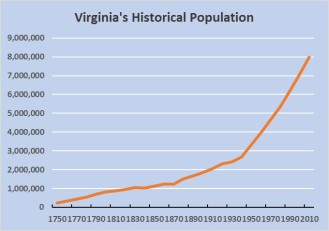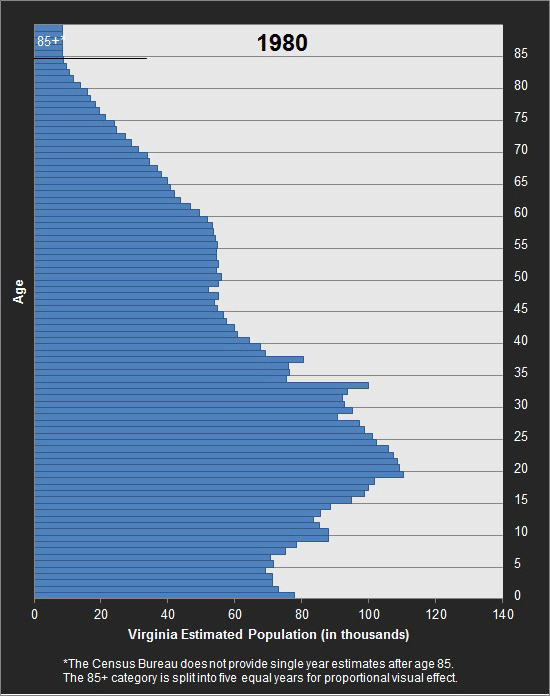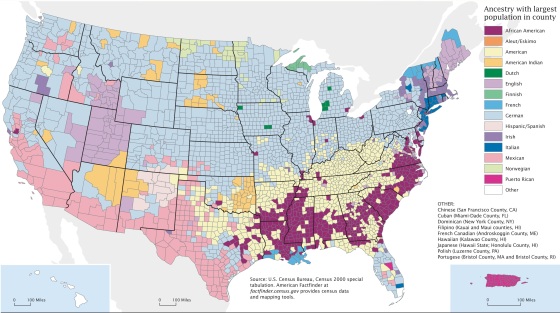Urban areas import the young and export the old, the theory goes, or went. For decades, young people have come to Virginia’s urban areas to go to university or work, often moving out again when their children require more space or education, or when they retire. But, since the mid 2000s, a demographic change has slowed the conveyor belt of movement in and out of cities. More young families are staying in Virginia’s urban areas to raise their children and enroll them in local schools, fueling the strongest population growth many of Virginia’s urban areas have experienced since the 1950s.
Though many young couples in the past have started families while they lived in urban areas, a good number would move to suburban counties before enrolling their children in school. In urban school divisions such as Arlington County and Fredericksburg, fewer than 60 percent of children born in 1999 showed up in first grade in 2005. The large number of young families moving into suburban school divisions caused many more children to enroll in first grade in counties such as Spotsylvania and Chesterfield than were born there six years earlier.
Source: Virginia Department of Education Fall Count, Virginia Department of Health Live Births, tabulated by the Weldon Cooper Center
Today, many parents are staying put in urban areas, thanks to stricter mortgage regulations that make it hard for buyers to get a loan, and a difficult labor market that makes it hard for anyone to be sure of a job. One-third as many homes were sold in 2012 as in 2005 in Virginia. During the same period, the Census Bureau’s American Community Survey shows that the number of Virginia families with children who live in a rented residence has increased 15 percent.
Continue reading →
 Virginia’s suburban counties, such as Prince William, or in any of Virginia’s metro areas, you likely grew up with the impression that growth is as certain as the seasons. For decades, many counties in Virginia have grown relentlessly, constructing thousands of homes each year to house new residents. With more residents come more schools, roads, offices and shops. Except for the hard times around the Civil War, Virginia’s population as a whole has grown continuously since it was a colony.
Virginia’s suburban counties, such as Prince William, or in any of Virginia’s metro areas, you likely grew up with the impression that growth is as certain as the seasons. For decades, many counties in Virginia have grown relentlessly, constructing thousands of homes each year to house new residents. With more residents come more schools, roads, offices and shops. Except for the hard times around the Civil War, Virginia’s population as a whole has grown continuously since it was a colony.









